Welders had been using shielding gases to protect their work since the 1920s, but when World War II began, these gases went from a niche practice to a commercial standard.
If you’re a welder, or if you want to become a welder, you need to know these gases and how they’re applied to welding. They’re used on every job site and in every project.
Why Are Shielding Gases Important for Welding?
Shielding are mainly used to protect the molten metal from the contamination and oxidation caused by these harmful gases in the atmosphere:
Have You Considered a Career in the Skilled Trades?
Fill out the form to recieve a no obligation info packet.
- Oxygen
- Carbon dioxide
- Nitrogen
- Water vapor
They also impact important parts of the welding process 1:
- Arc and metal transfer characteristics
- Fusion zone width
- Welding speed
- Weld penetration
- Surface shape patterns
- Undercut tendency
Why does any of this matter? The properties of various gases used in welding training are applied in real-world welding projects. And choosing the wrong gas can result in weld defects and discontinuities. 2
What Are Shielding Gases?
Shielding gases are inert or semi-inert gases that protect the weld from these harmful gases in the atmosphere:
- Oxygen
- Carbon dioxide
- Nitrogen
- Water vapor
These gases can damage the weld. 3 Shielding gases can also impact the amount of heat the arc produces and the appearance of the resulting weld bead. 4
To understand why these gases are important, we need to break down how exactly they influence welding.
How are Inert Gases Used in Welding?
Also known as noble gases, inert gases are colorless, odorless and non-chemically reactive. 5 In welding, argon and helium are the two inert gases used. Let’s get into their properties. 6
Argon
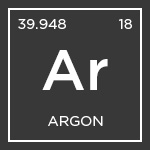
Argon accounts for 1 percent of air and is a by-product of the air-reduction processes used to produce oxygen. This gas is good for shielding welds in the flat position and in deep groves.
Argon is suitable for easier starts and alternating current applications, as well as for longer arcs at lower voltages. 7 In pure form, argon is often used with aluminum and nonferrous metals.
The addition of helium improves argon’s heat transfer properties, and combining argon with carbon dioxide or oxygen can help stabilize the arc. 8
Helium
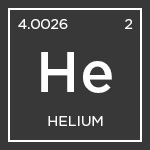
Helium is effective for mechanized applications but less forgiving for manual welding. Since pure helium creates an erratic arc, it can result in spatter when working with steel.
Even so, pure helium is ideal for magnesium, copper and aluminum. When mixed with argon, helium can provide cathode cleaning. Other blends can be used on aluminum and stainless steel. 9 10
How Are Semi-Inert Gases Used in Welding?
Gases with low reactivity are known as semi-inert. These semi-inert gases are used in the welding process:
- Hydrogen
- Oxygen
- Carbon dioxide
- Nitrogen
They can be used pure or as a blend. When the right quantities are applied, semi-inert gases can improve the quality of a weld. 11
Hydrogen
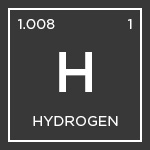
Hydrogen is often used in combination with other gases. When added to argon, it can deepen penetration and increase welding speeds. On grades of stainless steel that are sensitive to oxygen, it can result in cleaner weld surfaces and better bead profiles.
The mixture of argon, carbon dioxide and hydrogen can raise arc temperature, narrow the arc and improve weld penetration.
Hydrogen isn’t perfect, though. If used incorrectly, it can cause weld porosity, a phenomenon brought on by too much trapped gas, resulting in the formation of round holes. Cracking can also occur under the bead in carbon and low-alloy steels. 12 13
Nitrogen
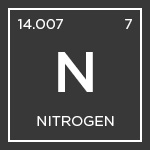
Nitrogen increases weld penetration and arc stability. Gas blends containing nitrogen can increase the mechanical properties of alloys containing nitrogen and prevent pitting corrosion and nitrogen loss from the metal. 14
Oxygen
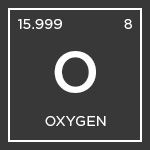
Similar to hydrogen, oxygen is usually used with other gases to shield the weld.
For example, oxygen is usually used in combination with argon during the welding process for these benefits 15:
- Arc stabilization
- Spatter minimization
- Metal transfer improvement
This gas can cause oxidation, however, so it can’t be used with copper, aluminum or magnesium.
And be conservative with using it: An abundance of oxygen can result in brittleness. 16
Carbon Dioxide
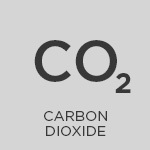
Carbon dioxide is best suited for steel and is especially useful in metal inert gas (MIG) welding because it increases weld speed, penetration and mechanical properties.
While inexpensive, carbon dioxide is not without its faults when used in welding. It causes a shakier arc and spatter loses, and working with it can produce a lot of smoke fumes on a jobsite. Mixing carbon dioxide with argon, however, can minimize spatter. 17 18
Carbon dioxide should also not be used for thin metals like aluminum. It’s usually too hot for thin metal to sustain.
Anyone studying to become a welder or is interested in becoming a welder needs to know the important roles these gases play in welding. The best way to learn how to apply these gases to welding projects is to have tools in your hand and an instructor by your side, but this cheat sheet will help you prepare ahead of time.
The little details are big deals in welding. Review the mechanical properties of metals to expand your understanding of the scientific and technical aspects of a welder’s job.
1 – Title: Welding Principles and Applications; Author: Larry Jeffus; Delmar Cengage Learning; Seventh Edition; Textbook page 274
2 – https://www.bakersgas.com/weldmyworld/2011/05/09/shielding-gases-used-in-welding/
3 – https://www.bakersgas.com/weldmyworld/2011/05/09/shielding-gases-used-in-welding/
4 – Title: Welding Principles and Applications; Author: Larry Jeffus; Delmar Cengage Learning; Seventh Edition; Textbook page 387
5 – http://www.dictionary.com/browse/inert-gas
6 – https://www.bakersgas.com/weldmyworld/2011/05/09/shielding-gases-used-in-welding/
7 – Title: Welding Principles and Applications; Author: Larry Jeffus; Delmar Cengage Learning; Seventh Edition; Textbook page 387
8 – https://www.bakersgas.com/weldmyworld/2011/05/09/shielding-gases-used-in-welding/
9 – Title: Welding Principles and Applications; Author: Larry Jeffus; Delmar Cengage Learning; Seventh Edition; Textbook page 387
10 – https://www.bakersgas.com/weldmyworld/2011/05/09/shielding-gases-used-in-welding/
11 – https://www.bakersgas.com/weldmyworld/2011/05/09/shielding-gases-used-in-welding/
12 – Title: Welding Principles and Applications; Author: Larry Jeffus; Delmar Cengage Learning; Seventh Edition; Textbook page 388
13 – https://www.bakersgas.com/weldmyworld/2011/05/09/shielding-gases-used-in-welding/
14 – https://www.bakersgas.com/weldmyworld/2011/05/09/shielding-gases-used-in-welding/
15 – Title: Welding Principles and Applications; Author: Larry Jeffus; Delmar Cengage Learning; Seventh Edition; Textbook page 274
16 – https://www.bakersgas.com/weldmyworld/2011/05/09/shielding-gases-used-in-welding/
17 – Title: Welding Principles and Applications; Author: Larry Jeffus; Delmar Cengage Learning; Seventh Edition; Textbook page 274
18 – https://www.bakersgas.com/weldmyworld/2011/05/09/shielding-gases-used-in-welding/
This blog has been labeled as archived as it may no longer contain the most up-to-date data. For a list of all current blog posts, please visit our blog homepage at https://www.tws.edu/blog/







